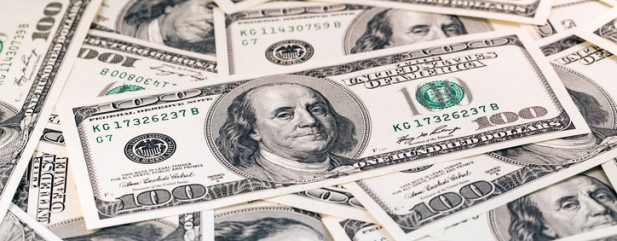Archived article
Please note that tax, investment, pension and ISA rules can change and the information and any views contained in this article may now be inaccurate.
Why the Fed’s U-turn matters to investors around the world

There have been numerous interesting events in the US over the past week which matter to investors around the world.
The latest economic data implies the US economy is doing very well with soaring job creation a key stand-out. Yet the US Federal Reserve has chosen to follow a more cautious path by putting interest rate growth on hold and being more flexible on running down its balance sheet.
Central banks normally increase rates to cool an economy that is racing ahead. In the Fed’s case, it is taking into account other metrics with its interest rate decision including global growth numbers. While the US economy is doing very well, the Fed clearly has concerns about a slowdown in China and Europe.
IMPORTANT FOR INVESTORS
The Fed’s new rate strategy is music to the ears of investors, as evident by the US markets rallying off the back of the news, the 10-year Treasury yield falling to 2.68%, the yield curve steepening and the US dollar falling in value.
This matters for investors in other parts of the world on various levels. Firstly, US interest rates are seen as a reference point for the largest economy in the world. Rising rates are often considered negative for stock markets, so a pause by the Fed has been well-received by investors.
The US dollar is the world’s ‘de facto’ reserve currency and primary currency of international finance. And the interest rate at which the US government can borrow – measured by the Treasury yield – ultimately acts as the level at which other financial assets are set.
Equally as important, Davy analyst Colin Grant says the Fed’s latest actions have opened the door to abandoning quantitative tightening and to restarting quantitative easing.
Since the financial crisis in 2008 the Fed has seen its balance sheet swell by engaging in quantitative easing and buying large amounts of Treasuries and other bonds. As bonds matured it reinvested the money back in the market.
More recently it started to let as much as $50bn of bond holdings mature every month without replacing them, thereby winding down its balance sheet in a process known as quantitative tightening.
QE VS QT
Quantitative easing gave support to the stock market and so quantitative tightening was seen as doing the reverse, arguably a key contributor to last year’s horrible performance among equities although that was also caused by other factors such as fears over slowing global growth and the US/China trade war.
Market commentators suggest we may now see the quantitative tightening programme decelerate and possibly stopped by the end of 2019. On a
similar note, last month European Central Bank president Mario Draghi said the ECB was open to resuming quantitative easing in Europe to support its softening economy.
Against this backdrop it is not surprising to see investors regain appetite for risk by bidding up shares and putting money into commodities and emerging markets.
RECENT US ECONOMIC SURPRISES
– Nonfarm payroll growth of 304,000 in January vs 170,000 expected
– ISM manufacturing 56.6% in January vs 54.3% expected
Important information:
These articles are provided by Shares magazine which is published by AJ Bell Media, a part of AJ Bell. Shares is not written by AJ Bell.
Shares is provided for your general information and use and is not a personal recommendation to invest. It is not intended to be relied upon by you in making or not making any investment decisions. The investments referred to in these articles will not be suitable for all investors. If in doubt please seek appropriate independent financial advice.
Investors acting on the information in these articles do so at their own risk and AJ Bell Media and its staff do not accept liability for losses suffered by investors as a result of their investment decisions.

 magazine
magazine








